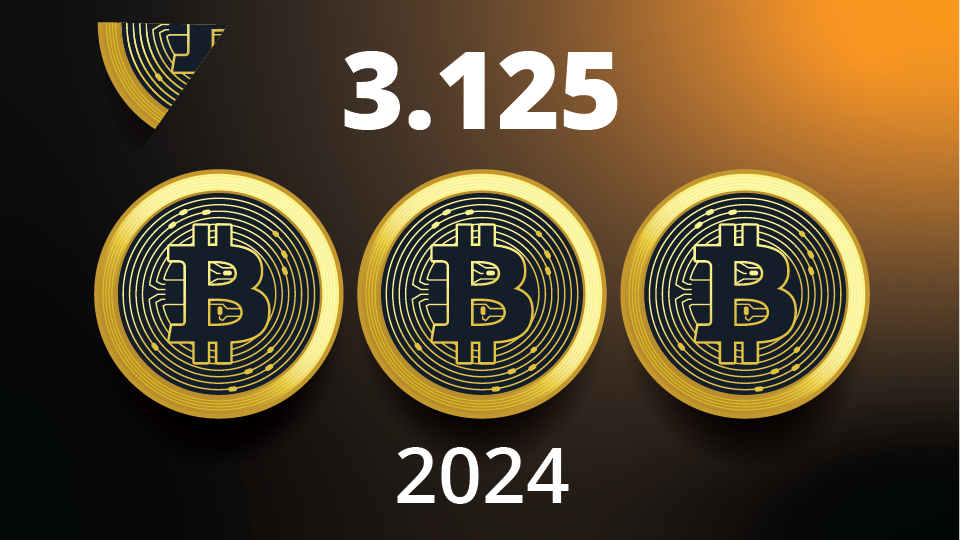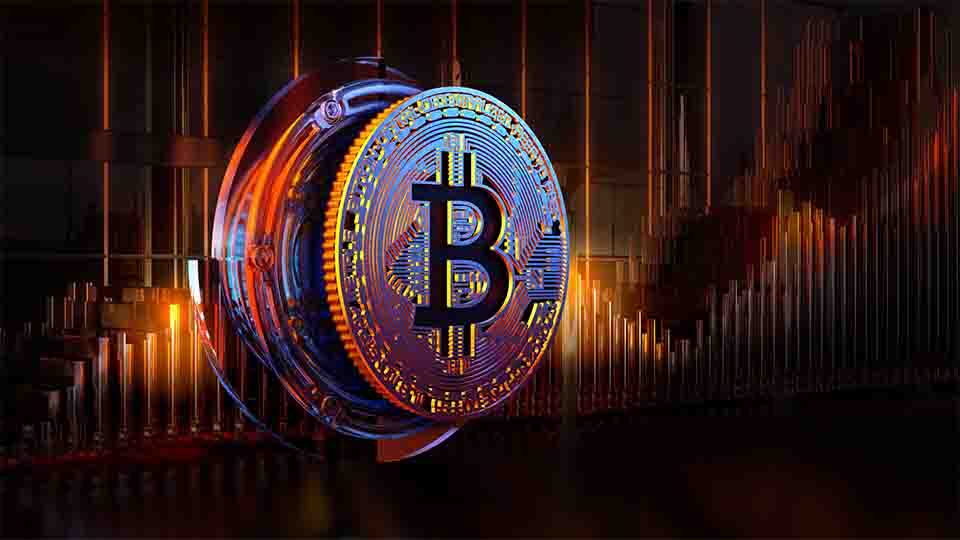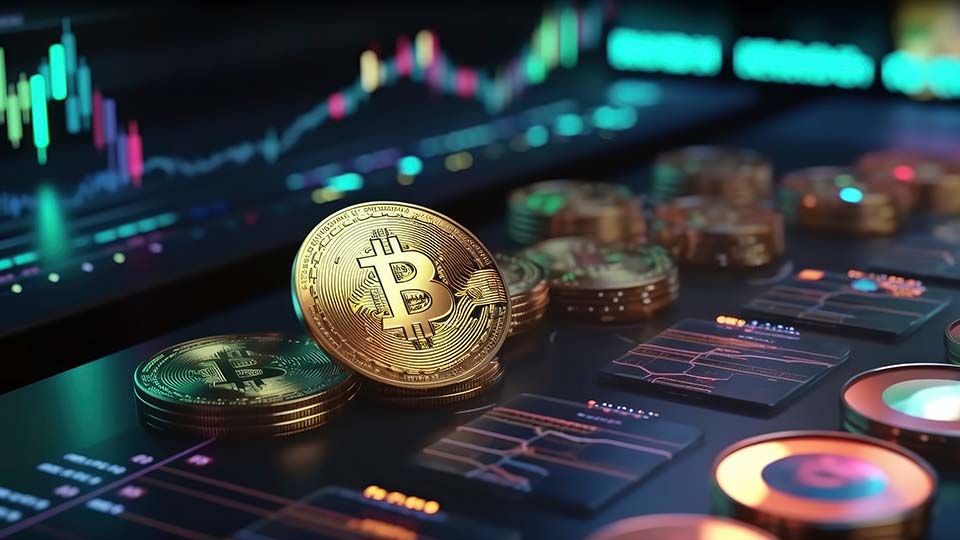Bitcoin Rises as Global Sanctions Trigger Resistance to U.S. Dollar Hegemony
April 06, 2023
Read Time 10+ MIN
Please note that VanEck may have a position(s) in the digital asset(s) described below.
"There is no subtler, no surer means of overturning the existing basis of society than to debauch the currency. The process engages all the hidden forces of economic law on the side of destruction, and does it in a manner which not one man in a million is able to diagnose." - John Maynard Keynes
In March, there was a significant variation in digital asset returns, with both Bitcoin and Ethereum experiencing double-digit percentage increases, even as other sectors we track fell more than 10%. Returns were correlated to size, with the MarketVector digital assets 100 Large-cap index rising 13% while the digital assets 100 small-cap index fell 9%. For the month, Bitcoin +22%, Ethereum +11%, vs. Nasdaq composite +7%, and the S&P 500 +3%.
Macro, Regulation, & Bitcoin
We highlighted coming into the year that improving liquidity, especially in China, might lead to Bitcoin price strength if past relationships held. Indeed, as both the PBOC’s reverse repo hit record levels in Q1 and M2 growth accelerated to 13% y/y, a 5-year high, we observed the Bitcoin price acting better on days with bigger liquidity injections from the PBOC. In addition, with HK set to unveil its digital asset regulatory framework, giving access to retail investors for the first time, Chinese SOE banks have stepped up their relationships with crypto firms in HK and elsewhere, according to multiple media reports. In our opinion, U.S. dollar hegemony is facing its biggest threat in decades as China, Saudi Arabia, India, and now notably Japan, among others, subvert global sanctions on Russia to secure sustainable, affordable energy supplies. Indonesia president Jokowi summarized the backlash to Washington’s dollar weaponization on March 22nd when he proposed phasing out Visa & Mastercard, according to RT, who quoted him as saying: “Be very careful. We must remember the sanctions imposed by the U.S. on Russia. Visa & Mastercard could be a problem.” During the month, the VanEck research team met with a Chinese Bitcoin mining machine manufacturer who told us that Saudi Arabia and other Middle East countries’ state-associated funds are currently tendering large Bitcoin ASICS orders, likely to make progress after Ramadan’s conclusion on April 20th. We think the Bitcoin price has run up sharply this year partially on expectations of these new state-sponsored Bitcoin buyers, in overt contradiction to the U.S. regulatory agencies’ hostile approach to the sector. For context, foreign holdings of U.S. treasury securities are languishing at a 10-year low, down 13% in the last 6 months, according to the U.S. Treasury. If deglobalization accelerates, we believe censorship-resistant bearer assets with predictable supply, such as Bitcoin and Gold, will comprise an increasing proportion of global reserves.
Previous Cycles Suggest that Bitcoin will Rally Prior to and After the Next Halving
Source: Arcana. Data as of 2/4/2023. Past performance is not indicative of future results. Not a recommendation to buy or sell any of the names mentioned herein.
Staying on the topic of regulation, the U.S.’s multi-agency crackdown on crypto reached a fever pitch in March with the New York Attorney General (NYAG) suing exchange Kucoin over their business practices, the CFTC bringing charges against Binance for allegedly operating an unregistered futures exchange, and the SEC issuing Coinbase a “Wells Notice.” To complicate matters further, there is an ongoing turf war between the SEC and the CFTC to determine the crypto regulatory domains of each entity. While the SEC is tasked with overseeing “securities,” the CFTC is in charge of governing “commodities.” This divide is settled in traditional finance, but how each agency’s regulatory powers relate to various cryptocurrencies is currently undecided despite each agency claiming overlapping suzerainty over crypto. The chief battleground in this fight is whether ETH is a “security” or “commodity,” which would determine regulatory jurisdiction.
After a late February assertion by SEC Chairman Gary Gensler that “everything else other than Bitcoin is a security” and the March 9 declaration by the NYAG that ETH was a security in court documents, it seemed the SEC was winning the battle. However, pushback occurred when the Chairman of the CFTC, Rostin Behnam, said the agency had a “direct jurisdictional hook” to regulate ETH, the commodity on March 9th and again in the CFTC complaint documents against Binance launched on March 27. While many crypto participants believe the CFTC would be a more accommodating regulator than the SEC, it appears that being caught between two government entities competing through “regulation by enforcement” is both the “rock” and the “hard place.” Settling the matter through legislation is the optimal solution, but this appears unlikely until after the 2024 election. Thus, we expect regulatory limbo and the potential for follow-up “tape bombs” while reminding investors & regulators alike that the United States of America is still a nation of laws and crypto will have its day in court.
Adding to the regulatory complexity, March also saw the implosion of several important crypto-banking institutions, including Silvergate and Signature Bank, amid broader banking sector panic. Silvergate failing’s is a material loss to the crypto industry as Silvergate’s SEN network enabled crypto market makers and related parties to send and receive USD instantly. The result has been a marked decrease in crypto liquidity as the bid/ask spreads increased, and market depth receded. SVB’s failure also prompted a dramatic depeg of the much-trusted stablecoin USDC from its dollar mark. This result occurred because Circle, the company behind USDC, held $3.3B in reserves at Silicon Valley Bank. When U,S. Treasury Secretary Janet Yellen announced that the U.S. government would backstop depositors at SVB, the price of USDC quickly recovered to its peg at $1.00. Still, despite the recoup of the $1.00-mark, faith in USDC has been shaken, and the result has been outflows from USDC of $9.3B since March 9, or around 22.7% of its total supply.
The practical conclusion to the increased regulatory enforcement appears to be the strengthening of certain incumbents, such as Tether, Coinbase, and Bitcoin, at the expense of a long tail of crypto exchanges and projects that do not have the resources to fight multiple regulatory battles and would prefer to retrench or go offshore during the crypto winter. Meanwhile, new banks are emerging to service the industry - ask for a list. The next Silvergate is more likely to be offshore, with more fragile correspondent banking relationships in the U.S.
Market Capitalization USDC vs. Tether
Source: Arcana as of 3/28/2023. Past performance is not indicative of future results. Not a recommendation to buy or sell any of the names mentioned herein.
Layer-1s
Despite the heated regulatory environment in March, the market capitalization of smart contract platforms rose from $297B to $321B thanks to notable strength from ETH (+11%) & BNB (+4%), and Cardano (+6%). The biggest losers of the month were Near (-16%) and Cosmos (-11%).
While Ethereum usership was flat in the month of March, the ETH token appreciated partly because of the sound execution of the Ethereum roadmap. In this respect, Ethereum’s vision of scaling through offboarding transaction execution to layer-2s is progressing well, as the amount of L2 gas usage (how much of Ethereum’s blockspace is occupied by L2 transactions) in March reached 17% vs. less than 5% at the end of 2022. In our view, initiatives that significantly enhance user experience will play a crucial role in promoting Ethereum's widespread adoption. This requires infrastructure that enables Ethereum wallets to rival the simplicity of conventional online banking. On that front, we believe the introduction of Ethereum’s ERC-4337 Account Abstraction Upgrade is the second most important Ethereum upgrade (after the Merge) and will be a key contributing factor in boosting confidence in Ethereum's commitment to reaching a larger audience. An audited version of ERC-4337 became available on the Ethereum mainnet in March. It will enable two-factor authentication, setting monthly spending limits on an account, the use of session keys to play blockchain games without constantly having to approve transactions, decentralized recovery of wallets, and configuration to autopay bills and subscriptions.
L2 Transaction Settlement Share of Ethereum
Source: Dune as of 4/3/2023. Past performance is not indicative of future results. Not a recommendation to buy or sell any of the names mentioned herein.
Going forward, we are also keeping a close eye on Ethereum Layer-2 scaling solutions that involve a technology called Zero-Knowledge roll-ups. Layer-2 roll-ups are a solution that allows the execution of transactions to happen off the Ethereum chain. The data from these transactions is compressed and posted to Ethereum to ensure authenticity and data storage. Currently, the dominant form of L2 roll-ups that exist are called optimistic roll-ups. Optimistic roll-ups post data onto Ethereum, which has a seven-day window that allows outside parties to challenge their authenticity. The result is that the roll-ups and transactions they execute can be rolled back if fraud is detected over that window of seven days. The issue is that users cannot trust their transactions to be truly final until that seven-day challenge period has passed. By contrast, Zero-Knowledge (ZK) roll-ups post proof of accuracy alongside the transaction data. Due to this property, ZK roll-ups are considered more promising over the long-term for scaling Ethereum – which could result in transaction throughput increases to 1000x what it is today. Two important ZK-roll ups were launched in March, and these are zkSync’s Era and Polygon’s zkEVM. Thus far, Era has dominated the ZK landscape with more than 40x the TVL as zkEVM. Still, it is early on in the adoption of ZK-Roll Ups, and many speculate users are migrating assets to Era for airdrops (distribution of rewards to early users). In any case, Era’s early lead is immense.
TVL Comparison: Era vs zkEVM ($M)
Source: Dune as of 3/31/2023. Past performance is not indicative of future results. Not a recommendation to buy or sell any of the names mentioned herein.
As for BNB, we partly attribute the Binance coin’s strength in March to a dramatic improvement in daily active addresses, up 28% compared to February, increasing to 1.22M. BNB token price also benefited from the release of BNB’s new roadmap, which promises to triple the chain’s validator count, enable a 12x transaction throughput increase to 5,000 TPS, deploy ZK roll-ups through zkBNB, and launch the BNB Greenfield decentralized storage project. BNB, despite the recent legal action against it, has an intense focus on creating interesting, inexpensive products that copy the best from other ecosystems and bring it to the lower-value users. This approach, mirroring the weapons export business aimed at bargain users of the Soviets during the Cold War, has earned it an average of 1 million daily active users, which is more than double the next highest chain, Ethereum.
Marketshare Daily Active Layer-1/Layer-2 Blockchains
Source: Dune as of 3/31/2023. Past performance is not indicative of future results. Not a recommendation to buy or sell any of the names mentioned herein.
Binance Active Addresses - 30 Day Moving Average
Source: Dune as of 3/31/2023. Past performance is not indicative of future results. Not a recommendation to buy or sell any of the names mentioned herein.
Cardano, despite flat usership, outperformed in part due to an important governance upgrade called CIP-1694. This improvement inches Cardano towards an important roadmap mile marker called the Age of Voltaire, which introduces decentralization by enabling a token-based voting system for Cardano treasury management and chain upgrades. Then on March 30, Milkomeda, a Layer-2 to Cardano, launched the capability to deploy smart contracts using Solidity. This layer-2 EVM capability brings smart contract language and functionality – something sorely lacking in Cardano over the past few years.
Among laggards in March, Cosmos and NEAR fell 16% and -11%, respectively. NEAR’s price is languishing due to a clear loss in adoption despite interesting announcements in March, such as the Blockchain Operating System, which allows a common layer for browsing Web3 applications, and a gaming partnership with South Korean powerhouse Kakao Games. Since the beginning of March, NEAR’s daily active addresses are down -17.3%, its TVL has dropped -34.9%, and transactions are down -9.1%.
On the other hand, the issues of Cosmos relate less to on-chain metrics than they do the continued dysfunction of the Cosmos community combined with the lack of execution and clarity surrounding Cosmos’s long-term business model. Despite encouraging developments, such as the announcement of USDC deploying natively to Cosmos and the passage of Cosmos’s first iteration of its business model, Replicated Security, community drama drowned out the positive news. Ongoing Twitter spats, notably between Cosmos co-founder Jae Kwon and basically the remainder of the community, have devolved into a legal battle between Kwon’s entity and a former employee of Kwon’s entity. This lawsuit may extend further to other major Cosmos figures and is indicative of vision disagreement among the major entities in the Cosmos. The most recent spat contributes to a picture of a divided ecosystem many assumed was holding Cosmos back. Specifically, at least eight separate entities are focusing on developing the Cosmos Hub. While most of these organizations share many common goals, they differ markedly on major portions of the Cosmos roadmap, and this was demonstrated when the ATOM 2.0 plan was rejected last year. Despite the stalled progress, we continue to be bulls on the Cosmos as it offers a unique community, value proposition, and architecture that is well-differentiated from Ethereum.
To receive more Digital Assets insights, sign up in our subscription center.
Related Topics
Related Insights
DISCLOSURES
Index Definitions
Index returns assume reinvestment of all income and do not reflect any management fees or brokerage expenses associated with fund returns. Returns for actual fund investors may differ from what is shown because of differences in timing, the amount invested and fees and expenses. You cannot invest directly in an index.
Nasdaq Composite Index: measures all Nasdaq domestic and international based common type stocks listed on The Nasdaq Stock Market.
The S&P 500® is widely regarded as the best single gauge of large-cap U.S. equities.
MarketVector™ Digital Assets 100 Large-Cap Index is a market cap-weighted index which tracks the performance of the 20 largest digital assets in the MarketVector™ Digital Assets 100 Index.
MarketVector™ Digital Assets 100 Small-Cap Index is a market cap-weighted index which tracks the performance of the 50 smallest digital assets in the MarketVector™ Digital Assets 100 Index.
MarketVector™ Digital Assets 100 Index is a market cap-weighted index which tracks the performance of the 100 largest digital assets.
Coin Definitions
Bitcoin (BTC) is a decentralized digital currency, without a central bank or single administrator, that can be sent from user to user on the peer-to-peer bitcoin network without the need for intermediaries.
Ethereum (ETH) is a decentralized, open-source blockchain with smart contract functionality. Ether is the native cryptocurrency of the platform. Amongst cryptocurrencies, Ether is second only to Bitcoin in market capitalization.
Solana (SOL) is a public blockchain platform. It is open-source and decentralized, with consensus achieved using proof of stake and proof of history. Its internal cryptocurrency is SOL.
Cardano (ADA) is a open-source, smart-contract platform that aims to provide multiple features through layered designs.
NEAR Protocol (NEAR) is a decentralized development platform that uses a Proof-of-Stake (PoS) consensus mechanism and will eventually feature a sharded architecture to scale transaction throughput.
Cosmos (ATOM) is a network of sovereign blockchains that communicate via IBC, an interoperability protocol modeled after TCP/IP, for secure data and value transfer.
Immutable X (IMX) operates as the first-ever Layer 2 scaling solution for NFTs on the Ethereum blockchain. Utilizing zk rollup technology, Immutable X aims to solve high gas fee and scalability concerns when minting and trading NFTs.
Decentraland (MANA) is building a decentralized, blockchain-based virtual world for users to create, experience and monetize content and applications.
The Sandbox (SAND) is a virtual world where players can build, own, and monetize their gaming experiences using non-fungible tokens (NFTs) and SAND, the platform’s utility token.
ApeCoin (APE) is a governance and utility token that grants its holders access to the ApeCoin DAO, a decentralized community of Web3 builders.
Risk Considerations
This is not an offer to buy or sell, or a solicitation of any offer to buy or sell any of the digital assets mentioned herein. The information presented does not involve the rendering of personalized investment, financial, legal, or tax advice. Certain statements contained herein may constitute projections, forecasts and other forward looking statements, which do not reflect actual results. Information provided by third-party sources are believed to be reliable and have not been independently verified for accuracy or completeness and cannot be guaranteed. Any opinions, projections, forecasts, and forward-looking statements presented herein are valid as of the date of this communication and are subject to change without notice. The information herein represents the opinion of the author(s), but not necessarily those of VanEck.
Investments in digital assets and Web3 companies are highly speculative and involve a high degree of risk. These risks include, but are not limited to: the technology is new and many of its uses may be untested; intense competition; slow adoption rates and the potential for product obsolescence; volatility and limited liquidity, including but not limited to, inability to liquidate a position; loss or destruction of key(s) to access accounts or the blockchain; reliance on digital wallets; reliance on unregulated markets and exchanges; reliance on the internet; cybersecurity risks; and the lack of regulation and the potential for new laws and regulation that may be difficult to predict. Moreover, the extent to which Web3 companies or digital assets utilize blockchain technology may vary, and it is possible that even widespread adoption of blockchain technology may not result in a material increase in the value of such companies or digital assets.
Digital asset prices are highly volatile, and the value of digital assets, and Web3 companies, can rise or fall dramatically and quickly. If their value goes down, there’s no guarantee that it will rise again. As a result, there is a significant risk of loss of your entire principal investment.
Digital assets are not generally backed or supported by any government or central bank and are not covered by FDIC or SIPC insurance. Accounts at digital asset custodians and exchanges are not protected by SPIC and are not FDIC insured. Furthermore, markets and exchanges for digital assets are not regulated with the same controls or customer protections available in traditional equity, option, futures, or foreign exchange investing.
Digital assets include, but are not limited to, cryptocurrencies, tokens, NFTs, assets stored or created using blockchain technology, and other Web3 products.
Web3 companies include but are not limited to, companies that involve the development, innovation, and/or utilization of blockchain, digital assets, or crypto technologies.
All investing is subject to risk, including the possible loss of the money you invest. As with any investment strategy, there is no guarantee that investment objectives will be met and investors may lose money. Diversification does not ensure a profit or protect against a loss in a declining market. Past performance is no guarantee of future performance.
© Van Eck Securities Corporation, Distributor, a wholly owned subsidiary of Van Eck Associates Corporation.
Related Funds
DISCLOSURES
Index Definitions
Index returns assume reinvestment of all income and do not reflect any management fees or brokerage expenses associated with fund returns. Returns for actual fund investors may differ from what is shown because of differences in timing, the amount invested and fees and expenses. You cannot invest directly in an index.
Nasdaq Composite Index: measures all Nasdaq domestic and international based common type stocks listed on The Nasdaq Stock Market.
The S&P 500® is widely regarded as the best single gauge of large-cap U.S. equities.
MarketVector™ Digital Assets 100 Large-Cap Index is a market cap-weighted index which tracks the performance of the 20 largest digital assets in the MarketVector™ Digital Assets 100 Index.
MarketVector™ Digital Assets 100 Small-Cap Index is a market cap-weighted index which tracks the performance of the 50 smallest digital assets in the MarketVector™ Digital Assets 100 Index.
MarketVector™ Digital Assets 100 Index is a market cap-weighted index which tracks the performance of the 100 largest digital assets.
Coin Definitions
Bitcoin (BTC) is a decentralized digital currency, without a central bank or single administrator, that can be sent from user to user on the peer-to-peer bitcoin network without the need for intermediaries.
Ethereum (ETH) is a decentralized, open-source blockchain with smart contract functionality. Ether is the native cryptocurrency of the platform. Amongst cryptocurrencies, Ether is second only to Bitcoin in market capitalization.
Solana (SOL) is a public blockchain platform. It is open-source and decentralized, with consensus achieved using proof of stake and proof of history. Its internal cryptocurrency is SOL.
Cardano (ADA) is a open-source, smart-contract platform that aims to provide multiple features through layered designs.
NEAR Protocol (NEAR) is a decentralized development platform that uses a Proof-of-Stake (PoS) consensus mechanism and will eventually feature a sharded architecture to scale transaction throughput.
Cosmos (ATOM) is a network of sovereign blockchains that communicate via IBC, an interoperability protocol modeled after TCP/IP, for secure data and value transfer.
Immutable X (IMX) operates as the first-ever Layer 2 scaling solution for NFTs on the Ethereum blockchain. Utilizing zk rollup technology, Immutable X aims to solve high gas fee and scalability concerns when minting and trading NFTs.
Decentraland (MANA) is building a decentralized, blockchain-based virtual world for users to create, experience and monetize content and applications.
The Sandbox (SAND) is a virtual world where players can build, own, and monetize their gaming experiences using non-fungible tokens (NFTs) and SAND, the platform’s utility token.
ApeCoin (APE) is a governance and utility token that grants its holders access to the ApeCoin DAO, a decentralized community of Web3 builders.
Risk Considerations
This is not an offer to buy or sell, or a solicitation of any offer to buy or sell any of the digital assets mentioned herein. The information presented does not involve the rendering of personalized investment, financial, legal, or tax advice. Certain statements contained herein may constitute projections, forecasts and other forward looking statements, which do not reflect actual results. Information provided by third-party sources are believed to be reliable and have not been independently verified for accuracy or completeness and cannot be guaranteed. Any opinions, projections, forecasts, and forward-looking statements presented herein are valid as of the date of this communication and are subject to change without notice. The information herein represents the opinion of the author(s), but not necessarily those of VanEck.
Investments in digital assets and Web3 companies are highly speculative and involve a high degree of risk. These risks include, but are not limited to: the technology is new and many of its uses may be untested; intense competition; slow adoption rates and the potential for product obsolescence; volatility and limited liquidity, including but not limited to, inability to liquidate a position; loss or destruction of key(s) to access accounts or the blockchain; reliance on digital wallets; reliance on unregulated markets and exchanges; reliance on the internet; cybersecurity risks; and the lack of regulation and the potential for new laws and regulation that may be difficult to predict. Moreover, the extent to which Web3 companies or digital assets utilize blockchain technology may vary, and it is possible that even widespread adoption of blockchain technology may not result in a material increase in the value of such companies or digital assets.
Digital asset prices are highly volatile, and the value of digital assets, and Web3 companies, can rise or fall dramatically and quickly. If their value goes down, there’s no guarantee that it will rise again. As a result, there is a significant risk of loss of your entire principal investment.
Digital assets are not generally backed or supported by any government or central bank and are not covered by FDIC or SIPC insurance. Accounts at digital asset custodians and exchanges are not protected by SPIC and are not FDIC insured. Furthermore, markets and exchanges for digital assets are not regulated with the same controls or customer protections available in traditional equity, option, futures, or foreign exchange investing.
Digital assets include, but are not limited to, cryptocurrencies, tokens, NFTs, assets stored or created using blockchain technology, and other Web3 products.
Web3 companies include but are not limited to, companies that involve the development, innovation, and/or utilization of blockchain, digital assets, or crypto technologies.
All investing is subject to risk, including the possible loss of the money you invest. As with any investment strategy, there is no guarantee that investment objectives will be met and investors may lose money. Diversification does not ensure a profit or protect against a loss in a declining market. Past performance is no guarantee of future performance.
© Van Eck Securities Corporation, Distributor, a wholly owned subsidiary of Van Eck Associates Corporation.




